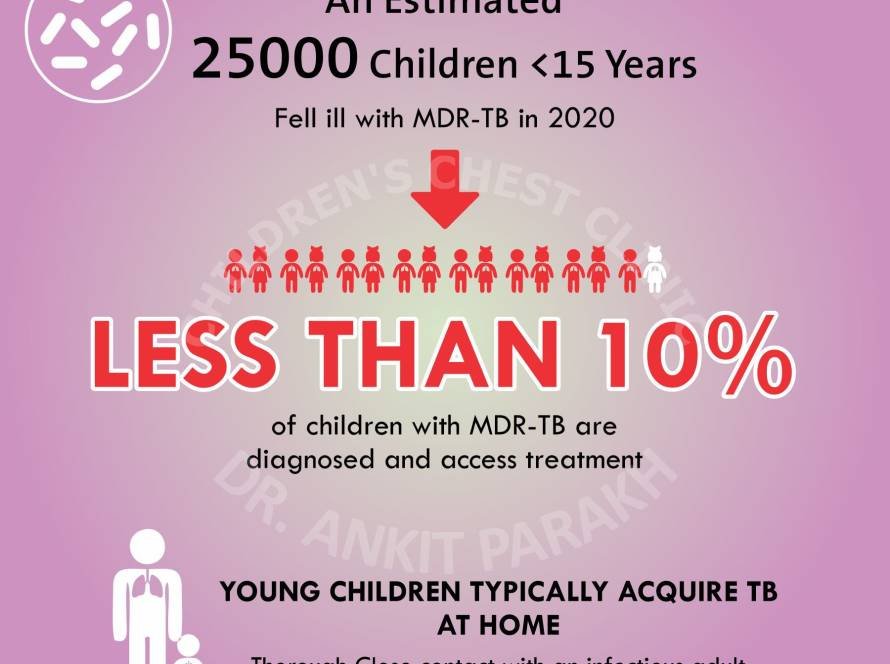Tuberculosis or TB is an infection by a bacteria known as Mycobacterium tuberculosis. Mycobacterium Tuberculosis is a slow growing bacteria. The treatment of tuberculosis (TB) is different from other bacteria and requires a longer treatment for a complete cure.
Before the treatment of tuberculosis (TB) is started, it is extremely important to have a correct diagnosis. In children the diagnosis of tuberculosis (TB) is usually done on the basis of symptoms and Xray findings. Ideally, the treatment of tuberculosis (TB) should be started after a microbiological confirmation i.e. tuberculosis (TB) bacteria has been found in the person’s body (usually in sputum or other samples). It is also important to check whether the first line medicines would work on the tuberculosis (TB) bacteria, the most important being rifampicin. The World Health Organization (WHO) and the Government of India advocate the use of rapid PCR based tests such as Gene Xpert TB PCR for identification of tuberculosis (TB) bacteria and resistance to rifampicin in all patients.

What are the first line drugs used in the treatment of tuberculosis (TB) in children?
If the tuberculosis (TB) bacteria is sensitive to rifampicin then the first line medicines are started. The first line medicines used for treatment for active tuberculosis (TB) are isoniazid, rifampicin, pyrazinamide and ethambutol. These medicines are used in combination to treat tuberculosis (TB) including children.
What are the phases in tuberculosis (TB) treatment?
The two phases of tuberculosis (TB) treatment are the intensive phase and the continuation phase. The first two months of treatment of tuberculosis (TB) is known as the intensive phase. During this phase there is rapid killing of the tuberculosis (TB) bacteria leading to rapid improvement in symptoms. Four drugs are used in the intensive phase: isoniazid, rifampicin, pyrazinamide and ethambutol. The continuation phase usually last for a period of 4 months, but might needs to be extended for 7-9 months in cases of extensive disease such as brain tuberculosis (TB) or bone tuberculosis (TB). During this phase of tuberculosis (TB) treatment the number of bacteria goes down further trying to achieve a cure. During the continuation phase for tuberculosis (TB) treatment three drugs are used: isoniazid, rifampicin and ethambutol.
How do we follow up children with tuberculosis (TB)?
A careful follow up is required after the treatment of tuberculosis (TB) is started. Usually the first follow up is at two weeks of treatment, then at two months, four months and then at the end of treatment. Children should be checked for reduction in symptoms, weight gain, and any side effects of medicines. Xrays are usually repeated at two months and end of treatment. At every follow up parents are emphasized to give medicines regularly and not miss any doses.
In case your child is suspected to have tuberculosis (TB) or has been diagnosed to have tuberculosis (TB) you need to get in touch with a child tuberculosis (TB) specialist or child pulmonologist for proper diagnosis and treatment.






